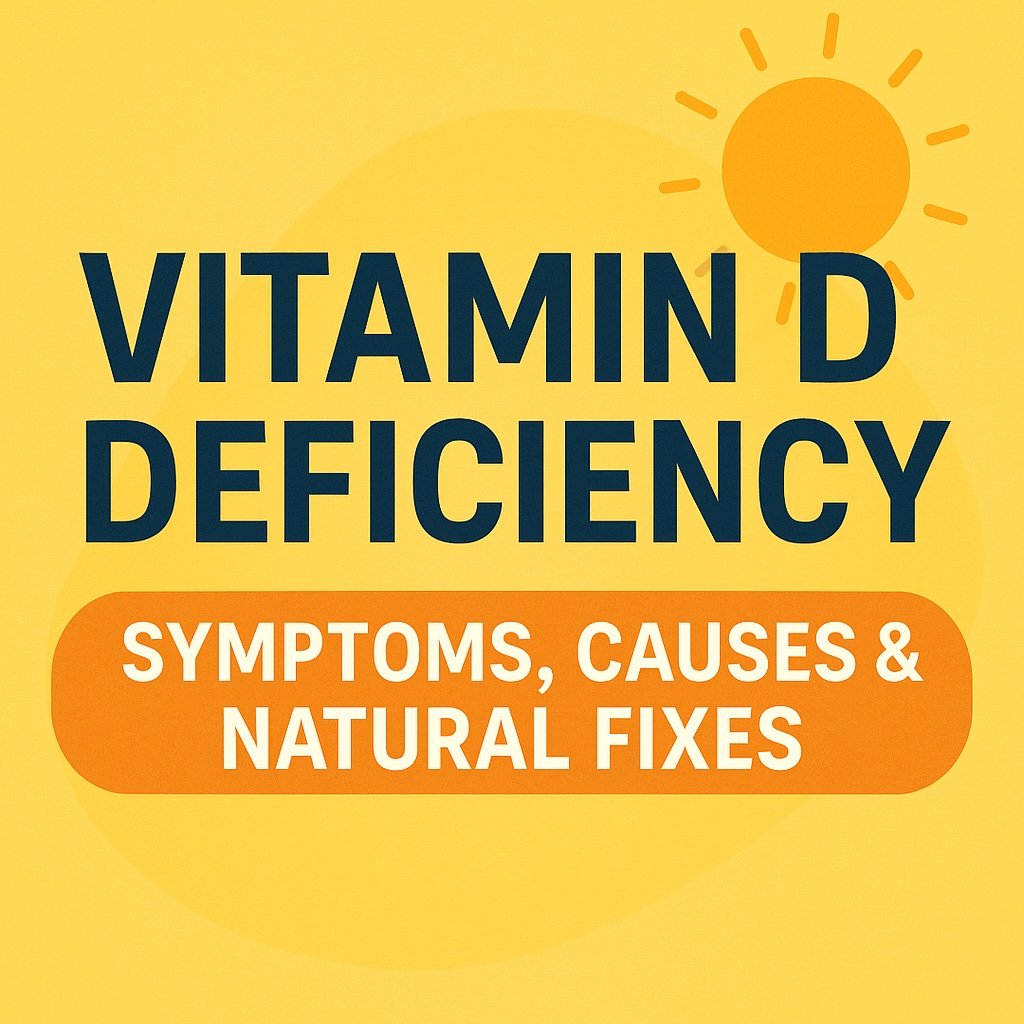Feeling tired all the time? Catching colds more often? You might be low on vitamin D.
Vitamin D, often called the “sunshine vitamin,” plays a key role in your mood, energy, bone health, and immune system. Yet, over 1 billion people worldwide are estimated to be deficient in it.
Why Do You Need Vitamin D?
Vitamin D helps your body:
- Absorb calcium and build strong bones
- Fight infections and boost immunity
- Improve muscle strength and reduce fatigue
- Regulate mood and reduce the risk of depression
When you don’t get enough, your body — and mind — start showing signs.
Common Symptoms of Vitamin D Deficiency
- Low energy or fatigue
- Frequent colds or infections
- Muscle weakness or cramps
- Bone pain, especially in the back
- Mood swings or depression
- Hair thinning or loss
- Slow wound healing
If these sound familiar, it’s worth checking your vitamin D levels with a simple blood test.
How Much Vitamin D Do You Need Daily?
Your daily needs vary by age and lifestyle, but general guidelines are:
| Group | Recommended Daily Intake |
| Adults (19–70 years) | 600–800 IU |
| Seniors (70+ years) | 800–1000 IU |
| Pregnant/Breastfeeding Women | 600–800 IU |
Many experts suggest that 1000–2000 IU/day may be more effective for people with low sun exposure or darker skin.
Best Time for Sun Exposure by Skin Tone
Your skin produces vitamin D naturally when exposed to sunlight — specifically UVB rays. The amount of time you need depends on your skin tone and the UV index.
Here’s a general guide for sunny days (UV index 6–7):
| Skin Tone | Recommended Exposure | Area to Expose |
| Light/Fair | 10–15 minutes | Face + arms |
| Medium | 15–20 minutes | Face + arms |
| Dark | 25–40 minutes | Face + arms or more |
- Best time: Between 10 AM and 2 PM
- Frequency: 3–6 days per week
- Tip: No sunscreen during this short exposure, then apply it if staying out longer.
Fun fact: Your body can make 10,000–20,000 IU of vitamin D in just 15–30 minutes of sun!
Foods Rich in Vitamin D
You can also get vitamin D from your diet. Add these to your plate:
- Fatty fish: salmon, sardines, tuna
- Egg yolks
- Fortified milk, cereal, or plant-based drinks
- Mushrooms exposed to sunlight
Still, food alone often isn’t enough — especially if you’re indoors most of the time or live in low-sunlight regions.
Should You Take a Vitamin D Supplement?
When to Consider Supplements:
- You stay indoors most of the day
- You live in northern or cloudy regions
- You have darker skin
- You wear full-body coverings
- You’re over 60
- You have IBS or absorption issues
- Your blood test shows levels below 30 ng/mL
💡 Safe daily supplement dose: 1000–2000 IU, unless your doctor recommends more.
When to Avoid Supplements:
- You already get enough from sun and diet
- You have high calcium or kidney problems
- You’re taking certain medications (check with your doctor)
Too much vitamin D can cause side effects like nausea, kidney issues, or calcium overload — so don’t go overboard.
Natural Fixes First: A Balanced Approach
Whenever possible, get your vitamin D the natural way:
- Spend time outdoors regularly
- Add D-rich foods to your meals
- Track your sun time using a UV app (like DMinder or UVLens)
Supplements are helpful, but they’re not always necessary — especially if a lifestyle shift can do the job.
Quick Recap: How to Fix Vitamin D Deficiency Naturally
- Get 15–40 minutes of sunlight, 3–6 times/week
- Eat vitamin D-rich foods like fish, eggs, and mushrooms
- Consider a supplement only if needed (after a blood test)
- Use a UV tracking app to get safe and effective exposure
Vitamin D is essential — but often overlooked. The good news? It’s one of the easiest deficiencies to fix. With a little sun, smart eating, and the right habits, you’ll feel more energized, focused, and resilient in no time.

